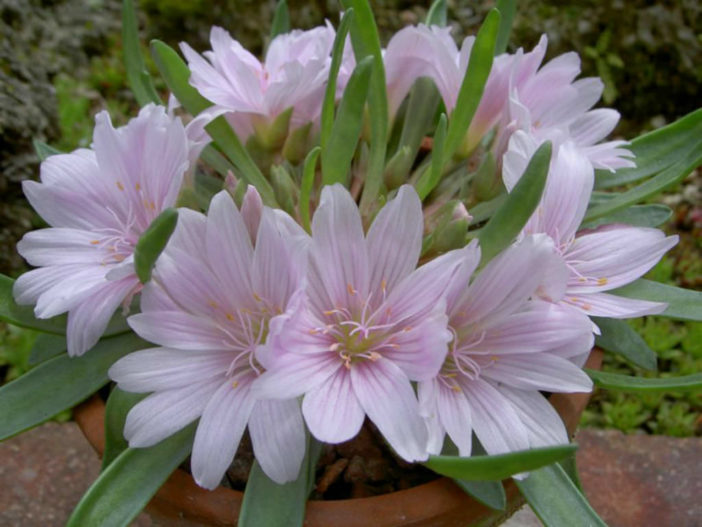Scientific Name
Lewisia brachycalyx Engelm. ex A. Gray
Common Name(s)
Short Sepaled Lewisia, Short-sepal Bitter-root
Synonym(s)
Lewisia brachycarpa, Oreobroma brachycalyx
Scientific Classification
Family: Montiaceae
Genus: Lewisia
Flower
Color: White or pale pink
Bloom Time: Summer
Description
Lewisia brachycalyx is a deciduous perennial growing from a short thick taproot and caudex unit. It produces a basal rosette of thick, fleshy, blunt-tipped, narrow, up to 3.2 inches (8 cm) long leaves. The inflorescence is up to 1.6 inches (4 cm) tall, taking the form of a cluster of several flowers sitting atop the leaf rosette. Each flower has 5 to 9 shiny white or pale pink petals about 0.8 inches (2 cm) long. At the center are many stamens and stigmas clumped together.

Hardiness
USDA hardiness zone 4a to 8b: from −30 °F (−34.4 °C) to 20 °F (−6.7 °C).
How to Grow and Care
Lewisia plants produce offsets that are the easiest way to propagate this interesting little succulent. Simply divide them from the parent plant and pot them up to grow good taproot and fleshy feeder roots.
You can also learn how to grow Lewisia from seed. The tiny plants take a couple of seasons to form a rosette but establish easily when sown in a sandy potting mixture.
Once the plants are placed in a garden situation, provide them with moderate water, excellent drainage, and a minimum of nutrients. It couldn't be simpler to grow Lewisias. The primary thing to remember is to avoid excessively fertile soil and compacted or clay situations. See more at How to Grow and Care for Lewisia.
Origin
It is native to the mountains of the southwestern United States and Baja California, where it grows in moist habitats such as meadows.
Links
- Back to genus Lewisia
- Plantpedia: Browse flowering plants by Scientific Name, Common Name, Genus, Family, USDA Hardiness Zone, or Origin
Photo Gallery
Click on a photo to see a larger version.




